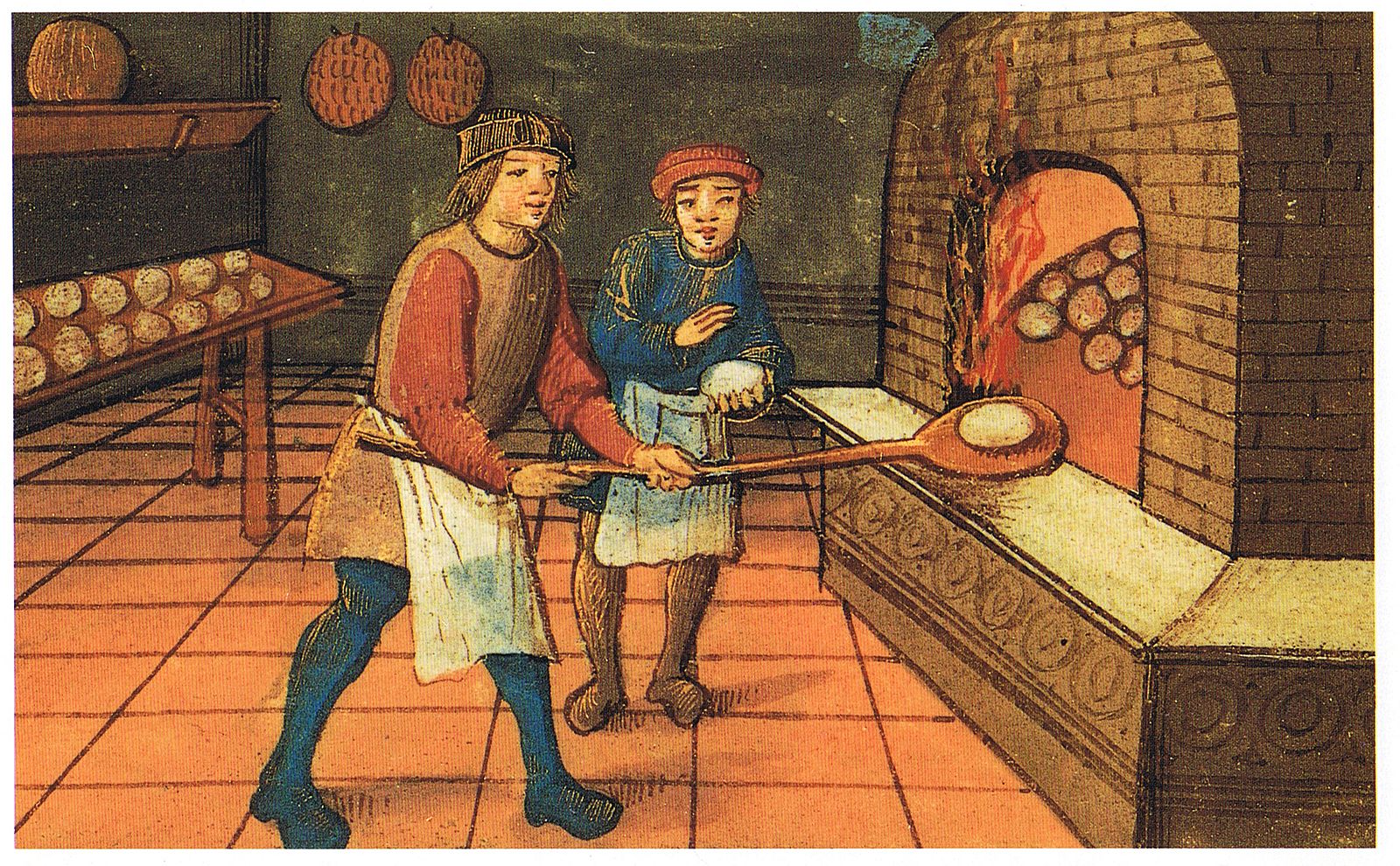Master
Cliquez ici pour la version française
Le Maître ______ | The Master _______
"A medieval baker with his apprentice", painting appearing in Den medeltida kokboken, Wikimedia Commons.
A maître or master (followed by an occupation name) was a worker or artisan who had achieved a masterpiece in his industry, allowing him to attain mastery in his craft. The title of master indicated that he excelled or was authoritative in his field, and could teach others (apprentices).
Since the Middle Ages, several trades in France and elsewhere in Europe were organized in communities, later called corporations or guilds. These corporations were hierarchically organized. To become a master in France, one generally had to have been an apprentice, then a journeyman, finally aspiring to mastery, and, as such, to have perfected a masterpiece or the experience.
In New France, regulations were much less strict for artisans than in France. Life was difficult and settlers did not just do their learned occupation — they also had to clear and plow their land and fish, for example. In addition, there wasn’t much specialized labour in the 17th and 18th centuries. So the French-type guild was abandoned, but the hierarchy and practical training were maintained. In most cases, an apprentice was hired around the age of 16 for a period of 3 years. Once his apprenticeship was over, the worker could become a journeyman, working alongside his master or on his own account. It was his entry into the labour force.
Examples: maître boucher (master butcher), maître charpentier (master carpenter), maître tisserand (master weaver), maître boulanger (master baker) etc.
Sources:
Alfred Franklin, Dictionnaire historique des arts, métiers et professions exercés dans Paris depuis le treizième siècle (Paris, H. Welter, 1906), 457.
Jean-Pierre Hardy and David-Thiery Ruddel, The Canadian Encyclopedia, s.v. "Apprenticeship in Early Canada", last modified July 18, 2016, https://www.thecanadianencyclopedia.ca/en/article/apprenticeship-in-early-canada.
